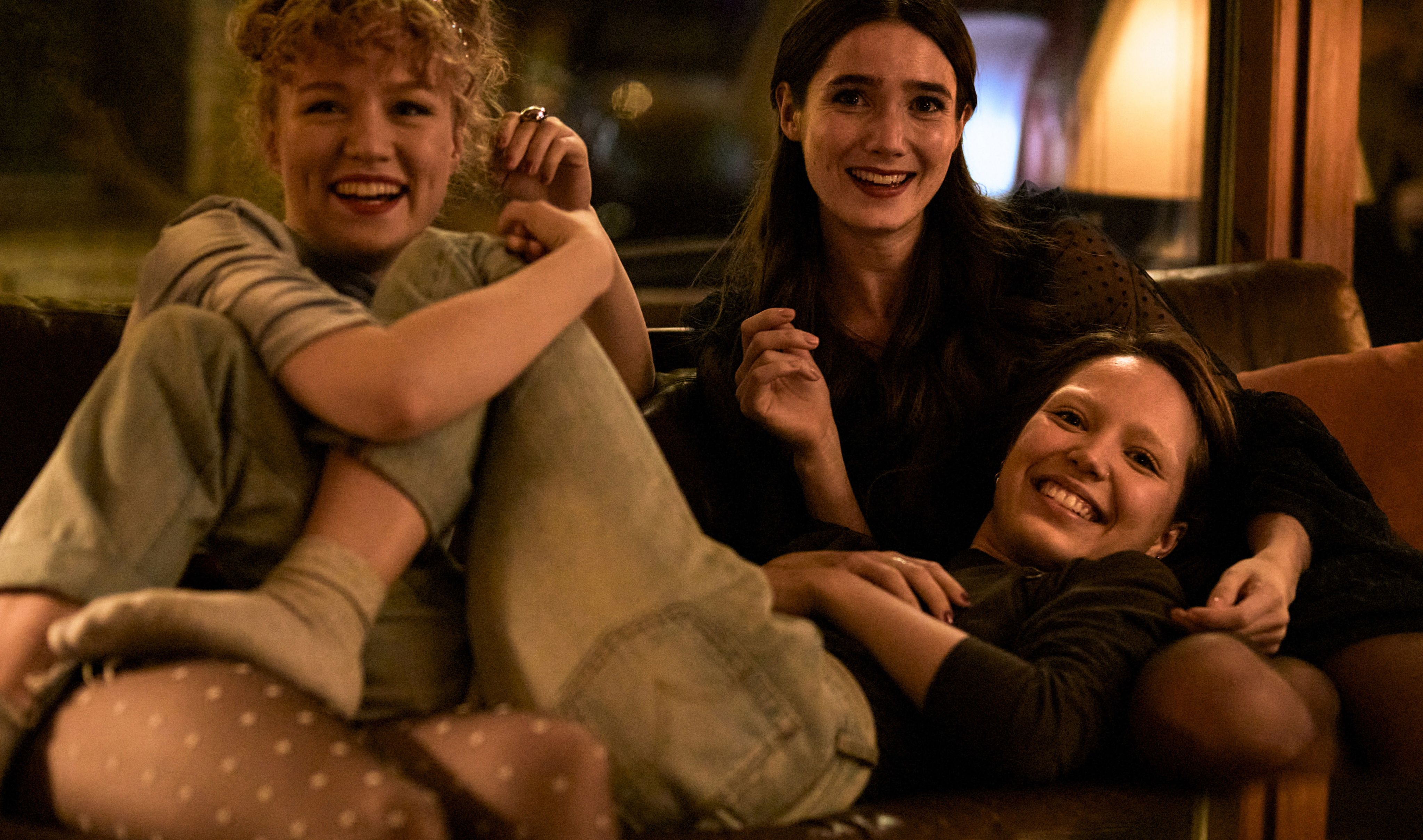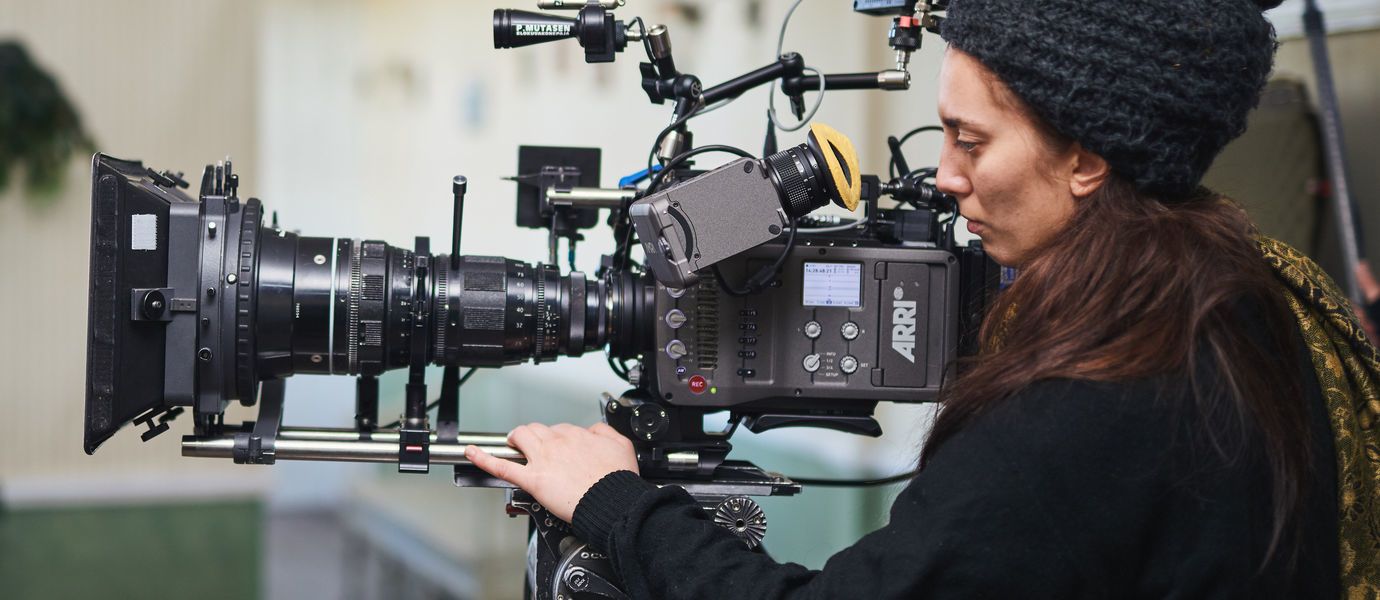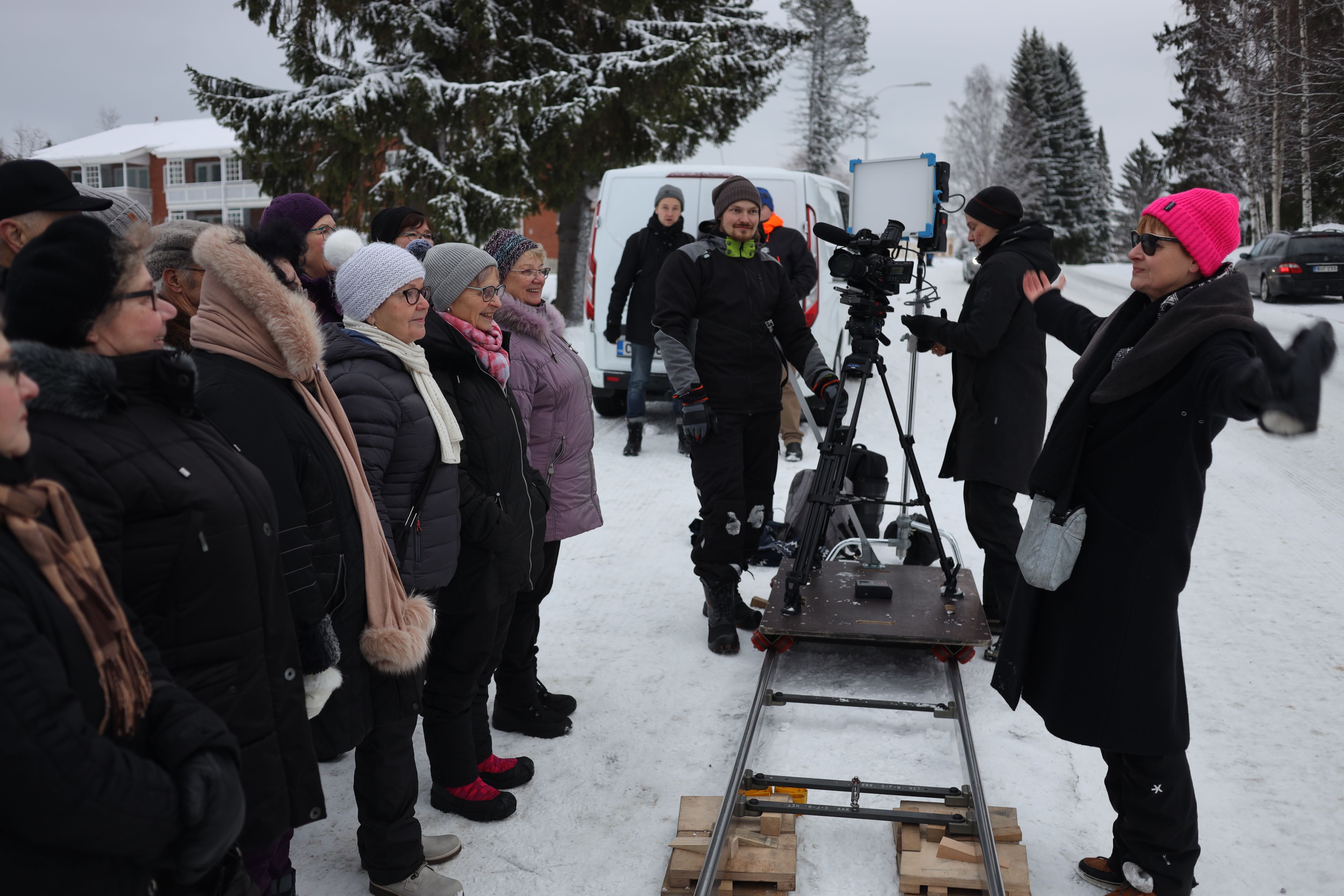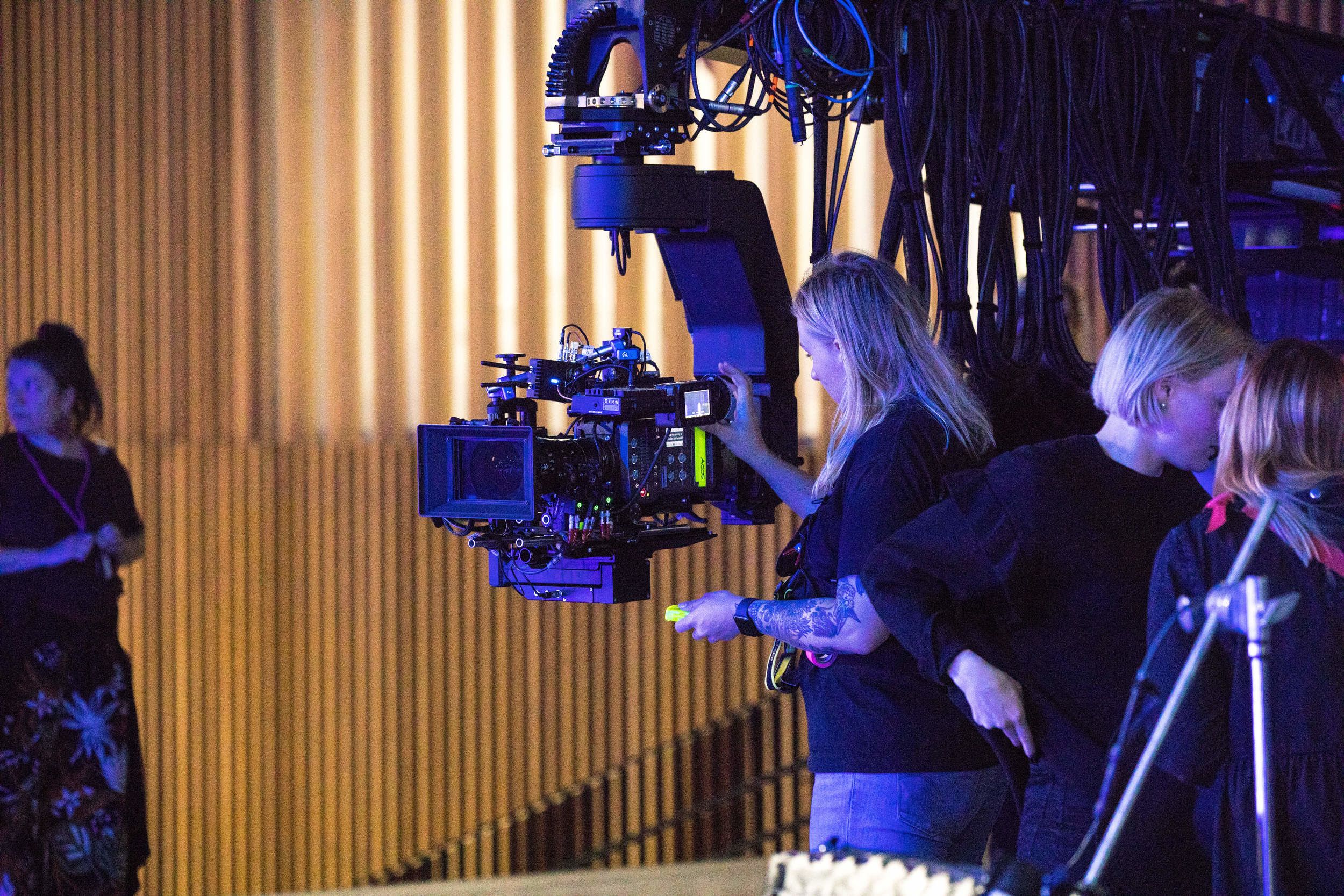Action! - Women's turn
Gender equality project in the film and TV sector has identified barriers to equality and women's employment in the sector

The #metoo movement brought the discriminatory work culture in the audiovisual sector into public debate in 2017, but what is the situation and work culture in the field like in Finland today? Why is it that half of women graduates cannot find jobs that match their skills, despite a severe labour shortage in the sector?
Inequality in the audiovisual sector is still an irreparable problem. It is not only a personal challenge for many women in the work life, but also an obstacle to the development of the creative economy.
‘The paradox of gender equality in the audiovisual sector remains unresolved: the sector is facing a labour shortage, but at the same time the skills of highly qualified women are not being exploited’, says project researcher Nina Maskulin at Aalto University's Department of Film.
For three years, the Action! project, a joint project between Aalto University and Women in Film & Television Finland, has been studying the current state of gender equality in the audiovisual industry and working to promote it as well as the employment of professionals in the sector. The concrete aim of the project has been to influence at grassroots level the equal consideration of women as creators and professionals in recruitment.
The final report of the project, which ended in May 2022, concludes that gender equality is poorly or not at all achieved in the audiovisual sector in Finland. Women are under-represented in almost all areas of the film and TV industry.
Ultimately, this is about the persistent development needs of Finnish working life: how to make room for diversity and how to identify the widest possible talent potential? How to change the prevailing structures and work culture?
Cinematographer Iiris Kärkkäinen at work, photo: Unto Rautio, Aalto University
A discriminatory work culture
One of the key findings of Action! project is that there are far too few female professionals in creative teams in the audiovisual sector. Although equal numbers of women and men are trained in the sector, half of the women graduates disappear into other sectors or out of the workforce.
Much research has been done on this issue. Both national and international studies and the observations of professionals show that there are far fewer job opportunities for women than for men. The findings of studies, surveys and questionnaires repeat the same harsh themes: gender and age discrimination, closed networks and closed job search.
'There is a serious problem in the industry of not valuing women – and along it, we are facing a problem of work and the needed work force not matching', says Kirsi Reinola, project manager at Aalto University's Department of Film.
She calls for active intervention, changes in the way we work and bold decisions to promote diversity.
'The audiovisual sector must finally move into the 2020s, also in terms of equality. A narrow skills base undermines not only the sector itself, but also Finnish well-being and competitiveness', Reinola urges.
Director Susanna Helke on the set of Ruthless Times document, photo: production company Road Movies
The Finnish audiovisual sector could also lead the way. In a small, low-hierarchy country, film production teams could be genuinely diverse and accountable. In an international context, this would be a strong competitive asset.


No roles, no access to the team, no funding
It is common in the sector to be employed on a temporary or freelance basis, as self-employed with a grant or as a small entrepreneur. Work life in the field is segmented, with fixed-term contracts. In addition, Finnish labour legislation does not recognise the employment, equality and equity of fixed-term workers.
The male-dominated nature of the sector affects women's employment, career development and well-being at work. Discrimination against women with higher education in the field leads to unemployment, low pay and exclusion from the sector.
More men than women are selected for artistic management positions in the sector – indeed, the majority of women trained for these positions are in auxiliary positions. Women are also less likely than men to be employed in higher-paid jobs and in the most sought-after and prestigious productions, such as feature films. In freelance-based work, employment is largely based on networking and the jobs are not advertised. The teams are mostly made up of like-minded people, often men.
Director Saara Saarela on set at Guardian of Water, photo: production company Bufo
Also, many women with technical skills, such as cinematographers or sound designers, end up working in jobs that do not match their education. In 2016, only 10–30% of the members of the film crews working on the photography, sound and editing of feature films were women.
In addition, public funding for the sector is inadequate and unequally distributed. No matter how you measure it, in the long run women's share of public production funding is lower than men's. Films and television series directed, produced or written by women only receive around 20–30% of public production funding – in other words, the vast majority of public funding goes to male productions. Men also receive funding decisions more quickly than women, for whom it can take years to apply for funding for their projects. In addition, the decision-making and evaluation criteria of public funders are invisible to filmmakers and applicants, which increases the unpredictability of funding.
Why are women's skills not recognised? Why are they not selected for working groups, and why are they ignored in recruitments, castings and funding negotiations?
Cinematographer Iiris Kärkkäinen filming We have Heaven, a film by dir. Tuukka Vartiainen, photo: Laura Mainiemi


Emilia Hernesniemi's short film Goodbye Tornio
Emilia Hernesniemen lyhytelokuva Hei hei Tornio
A need for gender data
To promote gender equality in the sector, gender data is needed. The impact of public funding on gender employment and pay levels needs to be analysed in a comparative and systematic way in the light of statistics. The key actors in the statistical framework are the public authorities funding the audiovisual sector, which can promote gender equality by leading the collection of gender data. Measurable monitoring data are needed not only for public authorities but also for commercial negotiations and lobbying.
This is not the case so far: there is not enough data available on gender equality. Public funders do not have consistent statistics and existing statistics are not comparable. For comparison, publicly funded theatres have been collecting gender and salary data on professionals for more than 20 years.
Social accountability can be measured through reporting and monitoring of gender and equality, which will contribute to the development and vitality of the audiovisual sector.
Comparable equality data is also increasingly in demand in the context of international competition: companies need access to data on economic, social and environmental sustainability. Without it, the competitive position of Finnish operators in negotiations is unnecessarily weak, as the European and also international field of operators in the audiovisual sector can present accurate data.
The collection of data would also enhance sustainability management – the public debate has promoted the importance of sustainability in corporate strategies.
Filming of a music vido at Aalto University, photos: Mikko Raskinen, Aalto University
Laura Birnin ja Anna Paavilaisen musta komedia Kaksi ruumista rannalla teki näkyväksi naisille tarjolla olevien roolien stereotypioita. Voiko nainen olla rikossarjassa muuta kuin kuollut ruumis? Elokuva voitti parhaan lyhytelokuvan Jussi-palkinnon vuonna 2020.
Towards a growth pac
However, the problems are correctable. It requires common understanding and decisions, a recognition of the importance of the issue.
Business Finland, various ministries and industry professionals are currently working together to develop a Growth Pact for the audiovisual sector, where the public sector and audiovisual operators will jointly define the future growth and development objectives of the sector as well as future business opportunities. The search is on for solutions, including to the shortage of talent that is holding back the sector's growth. The Growth Pact is due to be finalised in August 2022.
'We believe that the fastest way to improve the situation is to invest in gender equality. Therefore, the Growth Pact must include desired changes in three areas: work culture, decision-making and skills development', says Nina Maskulin.
The Action! project concludes by suggesting that in return, companies that receive significant public funding must collect data on gender impacts and comply with pay equity. After all, Finland is committed to promoting a gender-equal working life both at national and EU level, as well as part of the UN 2030 Agenda for Sustainable Development.
'We need to understand that an equal and respectful work culture is a key part of responsible business and a future success factor for the sector', says Kirsi Reinola.
The key to the solution
According to Action!, the key factors for increasing gender equality and addressing skills shortages are a respectful and open management culture, pay equity and education.
The work culture in the sector needs a more open attitude to diversity and more broad-based cooperation. Transparency and information about tasks, projects, salaries and contracts are also needed.
The gender impact of public funding needs to be actively monitored, reported and evaluated, with comparable statistics. There is also a need for more gender and diversity data and indicators.
There is also a need for private and public funding for knowledge, research and development: degree education for creative talent must be funded in line with the sector's development objectives, and the growth of the talent pool must be supported by continuing education. In particular, the sector needs further training in management skills.


The situation is similar in other parts of Europe and various bodies have published programmes of measures to improve the gender balance in the sector.
In 2015, the Sarajevo Declaration committed EU countries to reducing inequalities in the audiovisual sector by 2020. Eurimages, the Council of Europe's funding organisation for the audiovisual sector, recommends collecting, publishing and promoting research on equality-related statistics. Various monitoring methods and performance indicators are being developed or are already available.
These have not been introduced in Finland. Yet?
The Action! project aimed to promote gender equality and the removal of barriers to women's employment in the national audiovisual sector. The project produced studies and surveys and organised seminars, training sessions and round tables with authorities, decision-makers, commissioners, producers, filmmakers and trustees. The project was supported by the European Social Fund (ESF) for the period 2019–2022.


